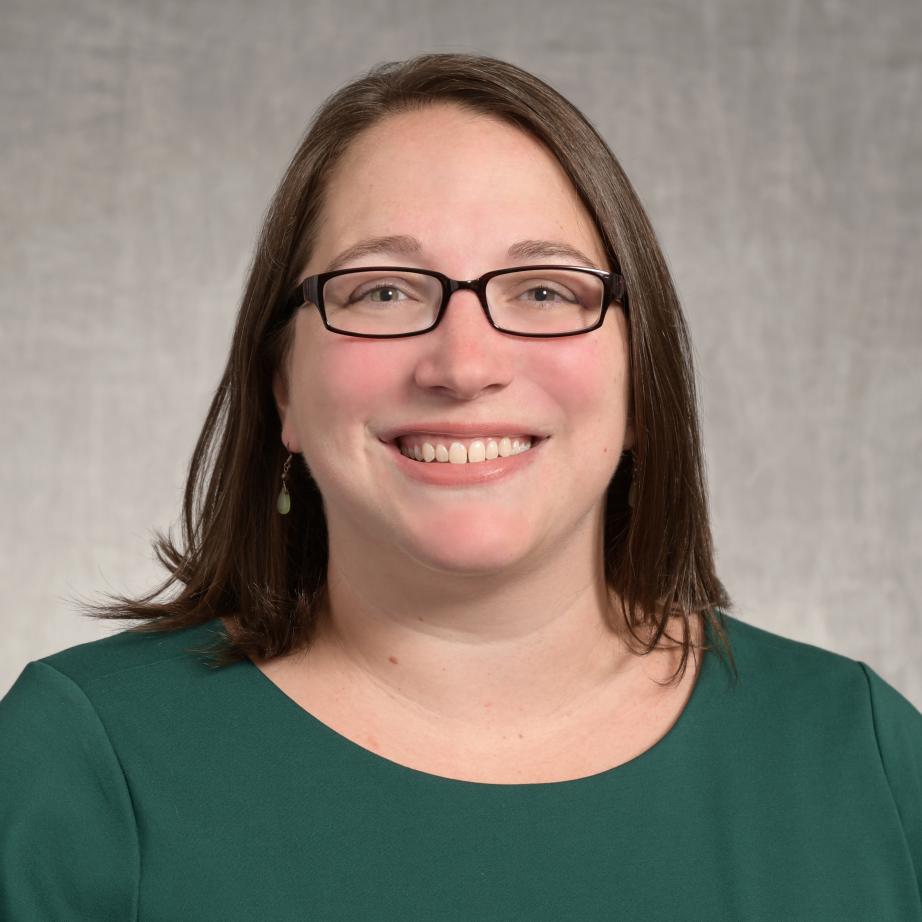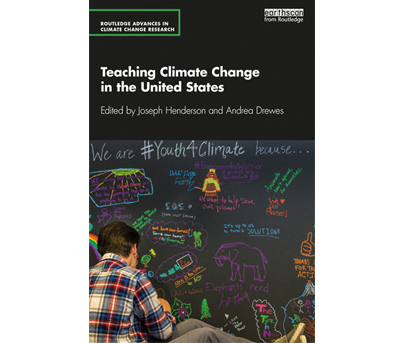Wednesday, Oct 7, 2020
Dr. Andrea Drewes is the co-editor of 'Teaching Climate Change in the United States'
by Keith Fernbach
Climate change is the most important issue facing society today, according to the majority of respondents in a 2019 Harris Poll conducted on behalf of the American Psychological Association. Yet surprisingly, four out of 10 people surveyed say they have not made any changes in their behavior to reduce their contribution to climate change.
Dr. Andrea Drewes, an assistant professor in Rider University’s Department of Graduate Education, Leadership, and Counseling, is taking a leading role in promoting climate change education so people can be better positioned to have a positive impact.
Drewes, along with Dr. Joseph Henderson, a lecturer in the Department of Environment and Society at Paul Smith’s College of the Adirondacks, recently co-edited a book, Teaching Climate Change in the United States, published by Routledge, which promotes best practices for climate change instruction in and beyond the classroom.
“Our goal was to explore how climate change education looks in very disparate parts of our country due to factors such as differences in our state-based educational systems, the standards that are taught, teachers’ instructional goals and the political context of climate change,” Drewes says.
“We also sought to provide tangible examples of programs and practitioners who are using social science and educational research to really inform their practice across a variety of settings.”
The book consists of 14 chapters, each of which focuses on various strategies employed by those working in the field. Chapters look at how climate change can be incorporated into a wide range of classroom environments — including novel places like kindergarten, humanities classes and the arts — as well as outside the classroom, with chapters discussing civic engagement and teaching students how to engage with their parents on climate change.
The roster of contributors is as varied as the topics. “One of the things I really like about this book is that we were able to listen to the experiences of some very well established names in the field, but we also highlighted a lot of stories from a number of up-and-coming researchers who are doing great, innovative work across the country,” Drewes says.
Authors include climate and education scholars such as Michael Mann, director of the Earth System Science Center at Penn State University, Kathryn Stevenson, faculty at North Carolina State University, and Fikile Nxumalo, faculty at University of Toronto. Each chapter is collaboratively written with teaching practitioners and informal educators as well. A sampling of these authors includes Jen Kretser, director of Climate Initiatives at the Wild Center in New York; Melissa Rogers, science curriculum developer for the Smithsonian Science Education Center in Washington, D.C.; and Nicole Rom, executive director of Climate Generation in Minnesota.
Drewes first became involved with climate change education research when she was a graduate student at the University of Delaware, where she earned a doctorate in learning sciences and wrote her dissertation on climate change teaching experiences.
“I investigated how science teachers come to identify as a teacher of climate change,” she says. “This was when it was still fairly controversial to include the topic in the classroom, so I sought a better understanding of their motivations and reasoning for choosing this topic to include in their science instruction.”
A synopsis of her dissertation, Personal, Professional, Political: An Exploration of Science Teacher Identity Development for Teaching Climate Change, was recently published in Environment Education Research Journal in 2020.
During this time she also became involved with a National Science Foundation grant program called MADE CLEAR (Maryland and Delaware Climate Change Education, Assessment, and Research), through which she helped to design and implement climate change professional development for teachers to assist them with integrating this scientifically and socially complex topic into their science curriculum.
Drewes says her experiences encouraging and supporting climate change education has taught her that one of the biggest ways to create change is by incorporating climate education change into curricula at all levels.
“Talking about it more often in classroom settings is one of the ways that we can move the impact light years beyond what it is already,” she says. “It doesn’t have to only be a middle school science topic or a high school science topic. We can discuss various aspects of climate change across grade levels and throughout different subject areas, too. And I think by expanding our climate change conversation, we can really have a positive impact on not just the understanding and awareness of the issue but a much more positive impact on the climate crisis itself.”
Drewes adds that she is encouraged to see New Jersey taking the lead in this area. “It’s promising to see that even since the book came out this spring, efforts are moving in the right direction. For example, in June, the state Department of Education has adopted revisions in its student learning standards, so now climate change will be integrated across all grade levels and all subject areas. New Jersey is the first state in the nation to take such a wide view on where we should be talking about climate change in the classroom, and that’s really exciting.”
Not only has the book helped to educate and inspire others about climate change, it has even impacted Drewes’ own work. One of the chapters focuses on empowering youth through climate summits, and she says she is using lessons from that chapter to launch a new program for students in New Jersey.
Working in partnership with Sustainable Jersey (a nonprofit organization focused on sustainability) and with funding from Atlantic City Electric and the Drumthwacket Foundation, she is helping to put together a project called the South Jersey Student Climate Action Initiative.
“It will be a collection of virtual experiences for middle and high school students to learn not only more about climate change,” she says, “but also to demonstrate the types of action they can be taking right now in their homes, their schools, and their communities to help mitigate some of the impact.”
Organizations from across the state will be involved to engage students in learning about locally relevant climate impacts and, more importantly, about community-based initiatives to alleviate some of these negative effects. Participating schools and students will be encouraged to design their own climate action projects and create digital stories to share their efforts.
Drewes believes that “projects like these are the ultimate goal of this new book. By engaging educators and students to deepen their understandings of climate change we can motivate them to create learning experiences to take action.”
Teaching Climate Change in the United States is available through sites including Routledge.com, independent booksellers via bookshop.org or Amazon.


